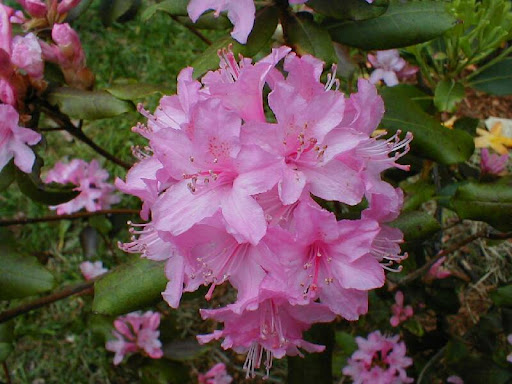Ed Bensley, Bedford, MA
Most of the gardeners I run into fall into two categories: those who prefer scientific (Latin) names and those who prefer common names. Those who prefer scientific nomenclature point out that common names vary from place to place, so that a single species can be called by different names in different places and different species can have the same common name. Those who prefer common names complain that the scientists change names so often that no one could be expected to remember them.

In genus Rhododendron there are so many species that using common names is not in general practical; however, that doesn't keep rhododendron enthusiasts from complaining about the name changes.
The rules that govern scientific names for plants are rather complicated, so I won't go into them here, though you can get a good flavor of what they are like by reading the recent article, "What Are Those Azaleas?", by Donald H. Voss in the Summer issue of the Journal of the American Rhododendron Society. Generally speaking, a name can change for two kinds of reasons, either because botanists have decided that the current classification is in error or because it is determined that the existing name is not in conformance with the rules.
Even under the best of circumstances taxonomists (those who classify organisms) can differ as to whether different plants indeed represent different species. In a genus as large as Rhododendron in which hybridization is prevalent in the wild as well as in the hybridizer's garden, the chances of disagreement increase. In recent years, however, there has been a significant attempt by the scientific community to resolve some of these questions. The inevitable result is a series of name changes.
We have seen this effect in the names of our native lepidotes where R. chapmanii and R. carolinianum have been subsumed under R. minus (as R. minus var. chapmanii and R. minus var. minus Carolinianum Group respectively).
Probably the most confusing name changes, however, have taken place among the Japanese elepidotes (subgenus Hymenanthes) where both classification changes and invalid names have combined to confuse the nomenclature. To begin with, the name R. japonicum had been given to an azalea (currently named R. molle ssp. japonicum) as well, and under circumstances where it was controversial as to which name took precedence. In addition, in the process of sorting this all out it was determined that the name R. metternichii was invalid as well. When the dust had settled R. makinoi, which had been briefly classified as a subspecies of R. yakushimanum emerged as a species while R. metternichii and R. yakushimanum were subsumed under R. degronianum (as ssp. heptamerum and ssp. yakushimanum respectively). As an example of the name confusion, R. degronianum ssp. degronianum had the names R. degronianum, R. metternichii ssp. pentamerum, R. japonicum var. pentamerum at various times in the last half of the twentieth century. R. metternichii went through a similar series of name changes, including R. metternichii ssp. metternichii and R. japonicum var. japonicum and ending up as R. degronianum ssp. heptamerum var. heptamerum.
Is any of this going to change any time soon? Hopefully in the computer age there will be fewer problems with invalid names. However, the taxonomists now have more powerful tools, and as they apply them it is virtually certain that there will be further changes in the classification. DNA analysis is becoming more prevalent among those studying the genus. So far it has played a role in defining the boundaries of the genus; DNA analysis supported the incorporation of the genus Ledum in the genus Rhododendron (as section Rhododendron subsection Ledum). While it will continue to be used for this purpose (e.g. should subgenus Therorhodion be a separate genus? should genus Menziesia be incorporated in Rhododendron?), it is certain to be used to resolve issues within the genus as well. Either way, more name changes are certain to be part of our future.